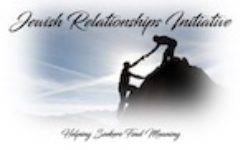Like so many others, I find myself in a place of anguish. The violence perpetrated upon both Israelis and Palestinians is overwhelmingly sad and tragic. I struggle with the hatred and resultant terror, death and destruction. Whether the cause is righteous or even justifiable, the price that the innocents pay is too great. And in the end, we all have blood on our hands, forever changed by war.
Today, many of us observe a fast. The 17th of Tammuz is traditionally a fast day for the Jewish people, marking catastrophes and heartbreaks in our history. It coincides with the fast of Ramadan. We join together praying that our sadness might transform into hope, that the killing might end, that the hatred might cease, that the opportunity for peace might appear as rays of light shining through the cracks in the broken vessel in which we find ourselves.
To learn more about this event, look to the website:
https://www.facebook.com/JewsAndArabsChooselife?hc_location=timeline
I share the following poem written by two religious leaders from Jerusalem, Sheikh Ibtisam Mahamid and Rabbi Tamar Elad-Appelbaum, shared with me by my colleague, Rabbi David Ackerman.
God of Life
Who heals the broken-hearted and binds up their wounds
May it be your will to hear the prayer of mothers
For you did not create us to kill each other
Nor to live in fear, anger or hatred in your world
But rather you have created us so we can grant permission to one another to sanctify Your name of Life, your name of Peace in this world.
For these things I weep, my eye, my eye runs down with water
For our children crying at nights,
For parents holding their children with despair and darkness in their hearts
For a gate that is closing and who will open it while day has not yet dawned.
And with my tears and prayers which I pray
And with the tears of all women who deeply feel the pain of these difficult days
I raise my hands to you please God have mercy on us
Hear our voice that we shall not despair
That we shall see life in each other,
That we shall have mercy for each other,
That we shall have pity on each other,
That we shall hope for each other
And we shall write our lives in the book of Life
For your sake God of Life
Let us choose Life.
For you are Peace, your world is Peace and all that is yours is Peace,
And so shall be your will and let us say
Amen
